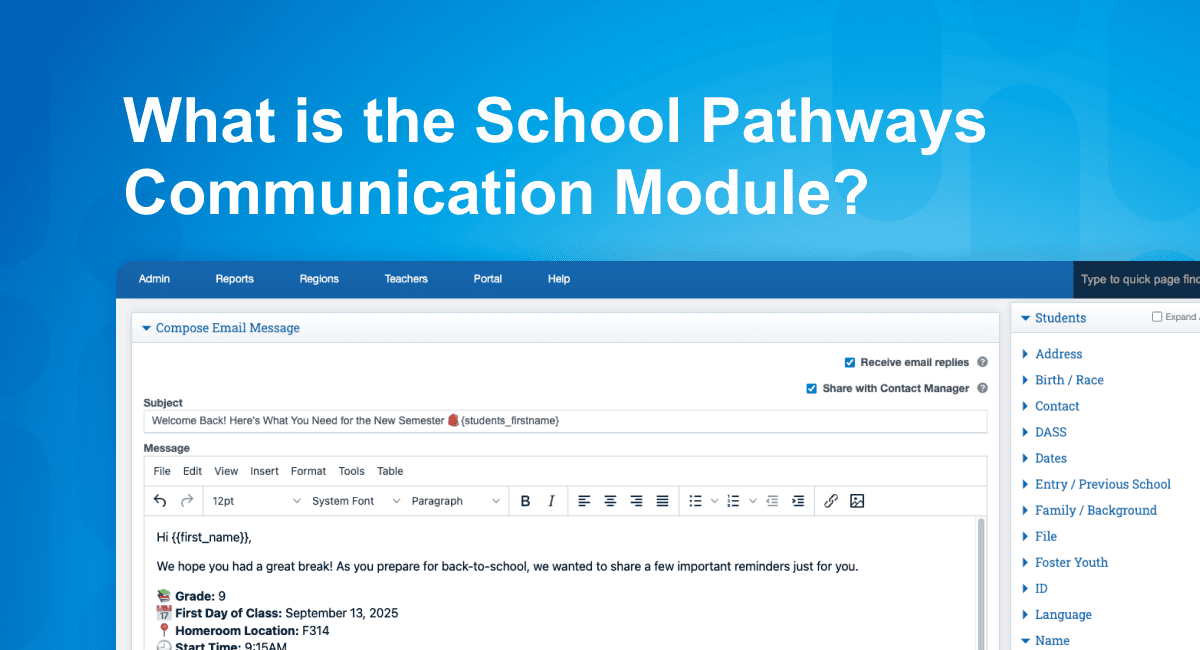As we approach the end of 2023, it’s helpful to take a step back and reflect on the insights we’ve gained this year. From the lingering effects of the pandemic to heightened debates about curriculum, educators faced just as many challenges this year. Still, as we look at the trends to come for 2024, there’s much to anticipate. New ways of engaging students are on the horizon, whether it be advancements in the capabilities of education technology or a more flexible curriculum.
Here is a year in education, with insights from 2023 and trends for 2024.
Education Insights from 2023
Learning Loss
According to the National Assessment of Educational Progress (or NAEP), the average scores for 13-year-olds have declined 7 points in reading and 14 points in mathematics compared to scores a decade ago. The time lost to the pandemic is an undeniable factor. Students would have to learn at an accelerated pace to make up for lost ground, but this could be difficult for those who missed out on learning foundational math and reading skills. With this unprecedented amount of learning loss, schools find themselves in uncharted territory.
Some have experimented with more summer school to mixed results, while others have adopted education technology in an attempt to better personalize the learning experience and meet the individual needs of students.
While results vary on a case-by-case basis, the use of education technology to recover learning loss has led to several success stories. One example is UPchieve, an EdTech nonprofit that provides free, 24/7 tutoring to low-income students. After just nine tutoring sessions, students using the service scored an average of nine percentile points higher on the national STAR math assessment, which is equivalent to 8 months of additional learning.
Increasing Political Division in Education
In a report by the RAND Corporation that surveyed a nationally representative sample of 8,000 teachers, one-quarter said they had revised their instructional materials or teaching practices to limit or exclude discussions of race and gender. This comes on the heels of an increase in state bills legislating parameters for teachers when addressing topics related to race and gender in their classrooms.
One example is Florida’s “Parental Rights in Education Act”. The most heavily debated sections of this law involve its prohibition of “classroom discussion” regarding sexual orientation or gender identity for students in kindergarten through third grade. This restriction would apply to all grades if that classroom discussion is determined to be against state standards. Proponents of the bill argue that it affords more rights to parents over their children’s educational content, while critics argue that it could limit essential discourse in education on gender and sexuality.
Other bills centered around discussion of race and history in the classroom include Connecticut’s SB 280, which prohibits any curriculum that makes “any individual feel discomfort, guilt, anguish, or any other form of psychological distress on account of the individual’s race or sex”. Texas’ HB1804 similarly directs that textbooks “may not include sections that condone civil disorder, social strife, or disregard for the law”.
Supporters of these bills contend that they aim to create an educational environment where students can learn without feeling personally implicated or uncomfortable due to their race or sex, preventing the spread of what they consider to be divisive concepts while maintaining a focus on universal human dignity.
Critics worry that these bills might sanitize or omit significant historical events and hinder a truthful understanding of the past. They argue that addressing complex racial issues is crucial for students to develop a full understanding of the role social justice and civil rights movements have played in American history.
These intense debates have led to a staggering 91% of public school teachers reporting that they feel caught in the crossfire of a culture war.
Chronic Absenteeism
In the most recent federal study conducted by Johns Hopkins researchers for the 2021-2022 school year, 66% of American students attended a school where at least one in five missed four weeks of school. This epidemic of absenteeism could lead to several adverse consequences. Students may experience more learning loss, reduced social development, and lower graduation rates. Schools might also receive less funding as a result.
There are a myriad of reasons for increased absenteeism, including financial instability, transportation issues, school staffing shortages, a student mental health crisis, and a lack of accountability between both parents and schools.
Among the proposed solutions to this new epidemic of absenteeism are a more engaging curriculum and increased family involvement. Students who are more interested in what is being taught and have a connection with their peers would be more incentivized to attend their classes. Better lines of communication with their parents would also help educators better diagnose and address the underlying barriers preventing students from making it to school as often.
Education Trends for 2024
ESSER III Fund Spending Deadline
Schools eligible for funding from the third and final round of the Elementary and Secondary School Emergency Relief (ESSER) fund will need to allocate funding by September 30, 2024, and spend all of the money by January 28, 2025.
The three rounds of funding have funneled $190 billion into schools across the country to provide pandemic relief and recovery. The money has been used in all manner of ways, from improving schools’ digital competencies through education technology to professional development for teachers, necessary campus renovations, mental health supports, and more.
Even with these historic investments into education, the spending deadline for ESSER III creates complications for schools hoping to stretch funding into the future. According to an Edweek article, “a school district using ARP ESSER funds for a successful tutoring program could not proactively apply for a liquidation extension to continue those services after September 30, 2024, even though the data is clear students will continue to need them.”
Despite the challenges of the ESSER III spending deadline, schools have an opportunity to make transformative changes and set a resilient foundation for the future of education in their communities.
Generative Artificial Intelligence in Education Technology
The prospect of generative AI adoption in schools is less a question of if but when. 70% of Gen Z reportedly use AI, and 52% of them trust the technology to help them make informed decisions. Schools that start implementing it now will not only be more prepared to benefit from this trend—educators will have more familiarity with AI’s capabilities and limitations to make necessary judgment calls for students’ use of the technology.
Presently, teachers can save unnecessary stress and time by using generative AI to draft personalized lesson plans for students, score papers, or draw insights from student data. However, it will be necessary for educators to establish guidelines that mitigate against generative AI’s propensities for error and algorithmic bias.
On the student side, the adoption of generative AI among many of the existing education technology platforms has the potential to transform the way students learn—with the promise that AI will enable a more personalized experience for every student.
While predictions and sentiments around AI in education are a mixed bag, there are already initiatives to prepare students for the realities of a post-AI world, such as the AI4GA pilot program. Students who participate in the program take courses such as “Living and Working with AI”, where they learn more about existing AI technologies and how they impact their daily lives.
Personalized Learning
7 in 10 high school teachers agree that one-size-fits-all learning is a thing of the past. Students learn in different ways, at varied paces, and they all have different goals out of high school. Personalized learning—whether through alternative postsecondary pathways or tech-enabled practices—is proving to be a valued method for empowering each individual student to get more out of their education.
The cost of a traditional four-year college degree remains a massive barrier to students considering continuing their education. To counter this, schools are partnering with various organizations to provide students with accelerated and alternative pathways to careers after high school. From early college credits to programs like CAPS Network, students can assess their career interests and connect with relevant employers in the industry while they’re still in high school.
Schools have also turned to education technology platforms to diversify the ways in which students learn. These platforms enable personalized learning at scale, with built-in curriculum from a variety of providers and more ways for students to interact with the content (i.e., interactive videos, gamification, one-to-one tailored learning support, and special accommodations for different learning styles or disabilities). Educators benefit from this technology too, as it gives them more insights into the efficacy of their instruction and more streamlined, actionable ways to improve it. By leveraging the right combination of EdTech tools, schools give themselves more flexibility over their use of staff, space, spending, and time.
Looking Forward to the Future of Education
While the challenges facing educators in 2023 remain top of mind going into the new year, the evolving education landscape offers promising changes for redefining learning experiences and school support systems.
School Pathways is a trusted partner with over 20 years of experience in education to schools wanting to scale their personalized learning with right-fit education technology. If you’re ready to meet the needs of each individual student, we’d love to chat.





